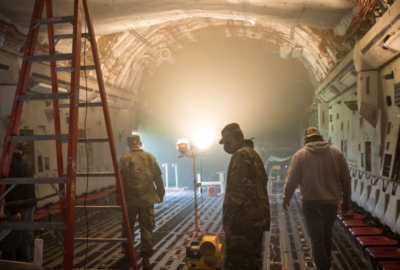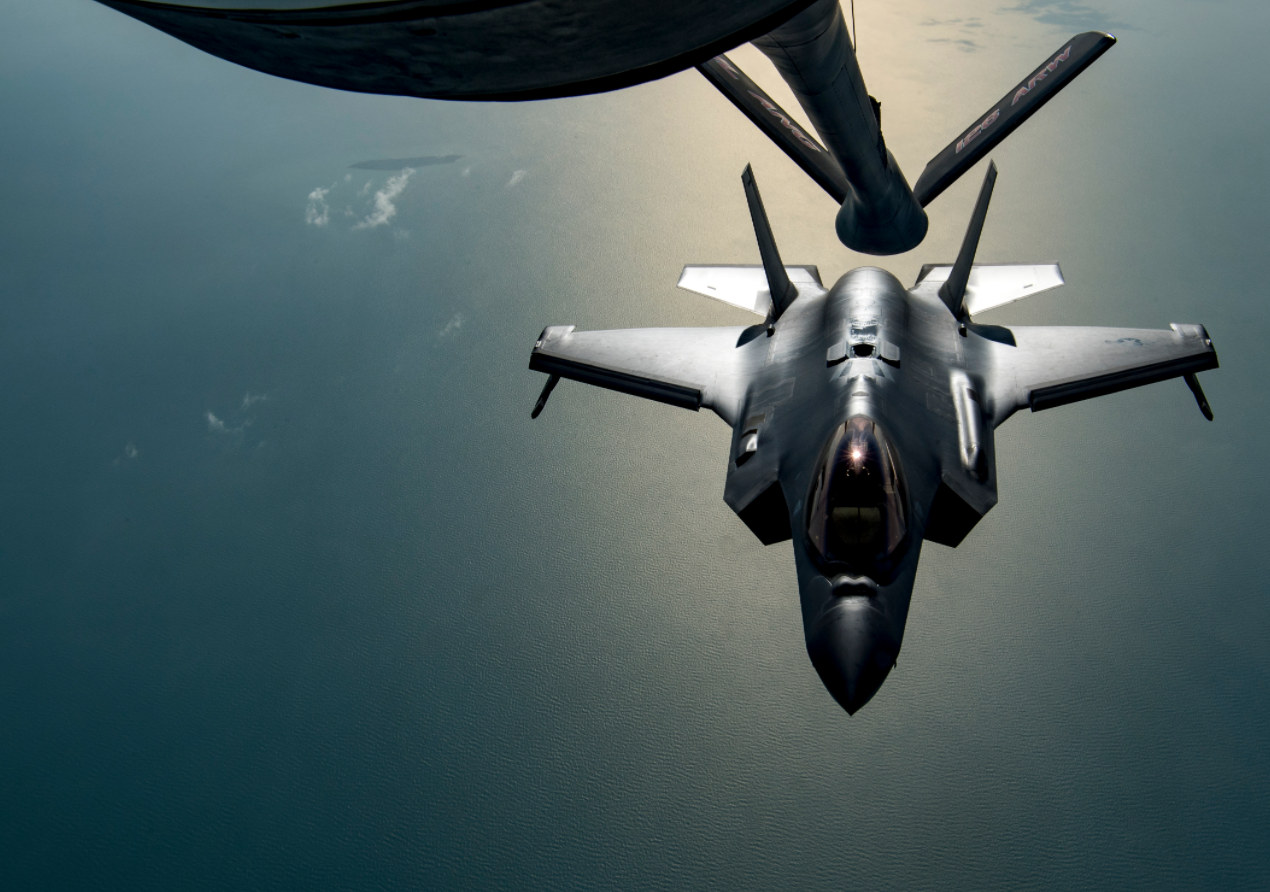
The Air Force builds a virtual test range for directed energy weapons
When it comes to directed energy technologies like lasers and microwave weapons, the air force just doesn't have anything that's quite ready to deploy it on a f...
Best listening experience is on Chrome, Firefox or Safari. Subscribe to Federal Drive’s daily audio interviews on Apple Podcasts or PodcastOne
When it comes to directed energy technologies like lasers and microwave weapons, the air force just doesn’t have anything that’s quite ready to deploy on a fighter jet. But a new modeling and simulation facility at Kirtland Air Force Base is going to try to make sure pilots are ready to use them once they are. The Air Force Research Laboratory just awarded a 10-year $80 million contract to build a new virtual range for directed energy weapons. For more, Federal News Network’s Jared Serbu on the Federal Drive with Tom Temin spoke with Christopher Hurlburt, deputy principal investigator for modeling and simulation at AFRL.
Interview transcript:
Christopher Hurlburt: The virtual range is going to be a simulation environment. That’s all computer-based and computer-generated for warfighters to come in and work with new directed energy concepts in a simulated environment. So we don’t have to have people actually flying planes. They will be using computers with virtual reality goggles, such as the Oculus or the Vive, depending on what we have on hand. And that will allow us to test these concepts in a simulated environment, show where the capabilities are, where there are some capability gaps, and get more fighters used to these kinds of technologies that the research labs are building.
Jared Serbu: And Chris, can you describe a little bit more about what this will actually look like if someone were to walk into the room? It’s a virtual range. Of course, it’s not occupying a huge amount of real estate, but what’s it going to look like?
Christopher Hurlburt: So what it’s going to look like is it’s going to be a very large auditorium with a lot of computer workstations. And then we actually have four simulated cockpits that are chairs with the hands on throttle and stick interfaces. So the pilots can actually have a throttle and a control stick like they would in an aircraft and then the virtual goggles so they have the 3d visual of the cockpit and the environment. Walking in, what you’re going to see is just a bunch of computers and monitors and keyboards.
Jared Serbu: And certainly there are a lot of other simulators across the air force including ones that are designed to simulate flying. What makes this special? What capabilities does this add to the air force’s existing modeling and simulation inventory?
Christopher Hurlburt: So what our virtual range brings to the air force here at the research labs is we are actually focused on the directed energy aspect of modeling and simulation and the warfighter. So, a lot of ranges are focused on aircraft, flight maneuvers or using kinetic systems such as missiles and rockets that are already in existence. We are actually working on bringing lasers and high-powered microwave weapon systems to the warfighter. So that’s what our focus is on. We have the expertise to bring those into the simulated environment and show those to the warfighter.
Jared Serbu: Right. That was kind of my next question, are you mainly going to be modeling and simulating existing weapons that AFRL has already developed? Or is this more geared toward future capability development?
Christopher Hurlburt: We’re gonna do both. We will model the ones that are already in existence and that we’ve already developed. But we will also be modeling future concepts and capabilities.
Jared Serbu: Can you give us a kind of broad sense of what you’re hoping the air force will be able to learn by virtue of having this capability?
Christopher Hurlburt: So what we hope to bring to the modeling and simulation community in the warfighter is the capability for the research labs to demonstrate its technologies and how we can fill those capability gaps that kinetics may leave behind and provide more support at less cost to the warfighter. When you have a system such as a high energy laser that you can fire multiple times without having to reload it or go back and reload the aircraft. They’re on there. And it charges off of the systems already on the aircraft. That’s a huge win for the air force and the warfighter.
Jared Serbu: And when you’re simulating weapons that are already in existence that AFRL has already created, I assume that requires you to have pretty accurate digital twins of how those would behave in the real world. How close are you able to get?
Christopher Hurlburt: It depends on the system and its actual development cycle. So if it’s a one that’s close to production, we can have a full-on digital twin and get very close to them. If this is a concept that someone is tinkering with, for instance, in one of our other divisions here at the research labs, then what we would be able to do is take their best information, add it to a concept template, edit possibly, and then work with that and then show a trade space or where things may need to be adjusted to have more power, less weight. And such like.
Jared Serbu: I understand this as a 10- year program. $80 million. Substantial investment there. Sounds like there’s gonna be more involved here than just an off-the-shelf Oculus headset. What’s going to happen actually over the life of that 10-year program?
Christopher Hurlburt: So a lot of what’s actually going to happen is a combination and integration of different technologies that allow for modeling and simulation, as well as the development of a library of concepts and particular weapon systems platforms such as aircraft, spacecraft, surface vehicles that allow us to bring in a concept added on to a particular platform such as the back of the truck, onto an F-16, F-15, F-35. Whatever the concept owner wants, and then run that through a simulation, bring warfighters in so they can do man-in-the-loop interface with it and run that. So there’s development on concepts, there’s development on integration of the software technologies. And then there’s development of a scenario or arrange for the warfighter to fly through. The virtual range is just one part of what we’re going to be doing. So it’s flashy, we get the warfighter in there. But we also do a lot of studies that are just constructive, where it’s all-digital and all runs on the computer to really fill out a trade space.
Tom Temin: Christopher Hurlburt, deputy principal investigator for modeling and simulation at the Air Force Research Laboratory speaking with Federal News Network’s Jared Serbu.
Copyright © 2024 Federal News Network. All rights reserved. This website is not intended for users located within the European Economic Area.
Tom Temin is host of the Federal Drive and has been providing insight on federal technology and management issues for more than 30 years.
Follow @tteminWFED





